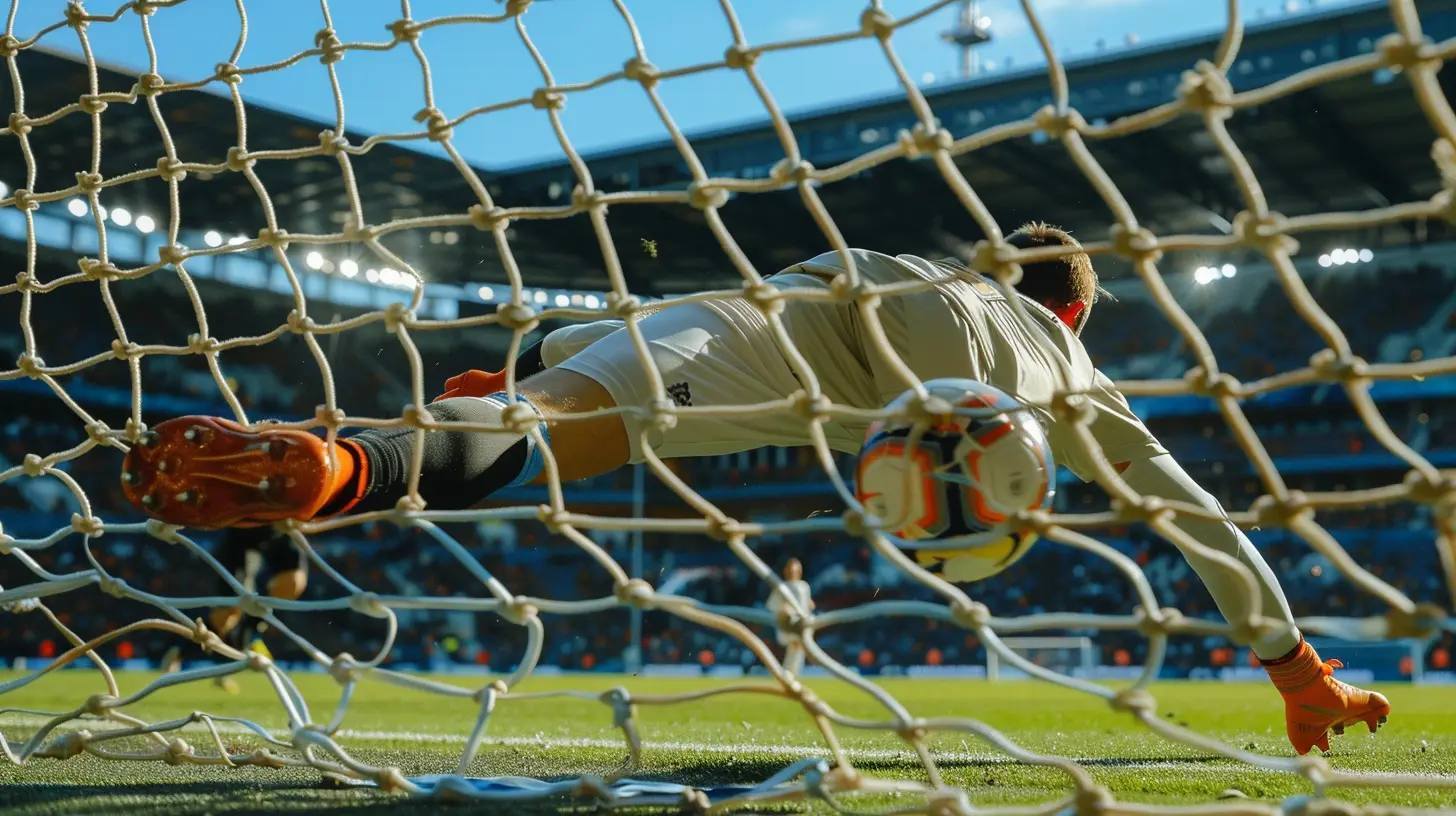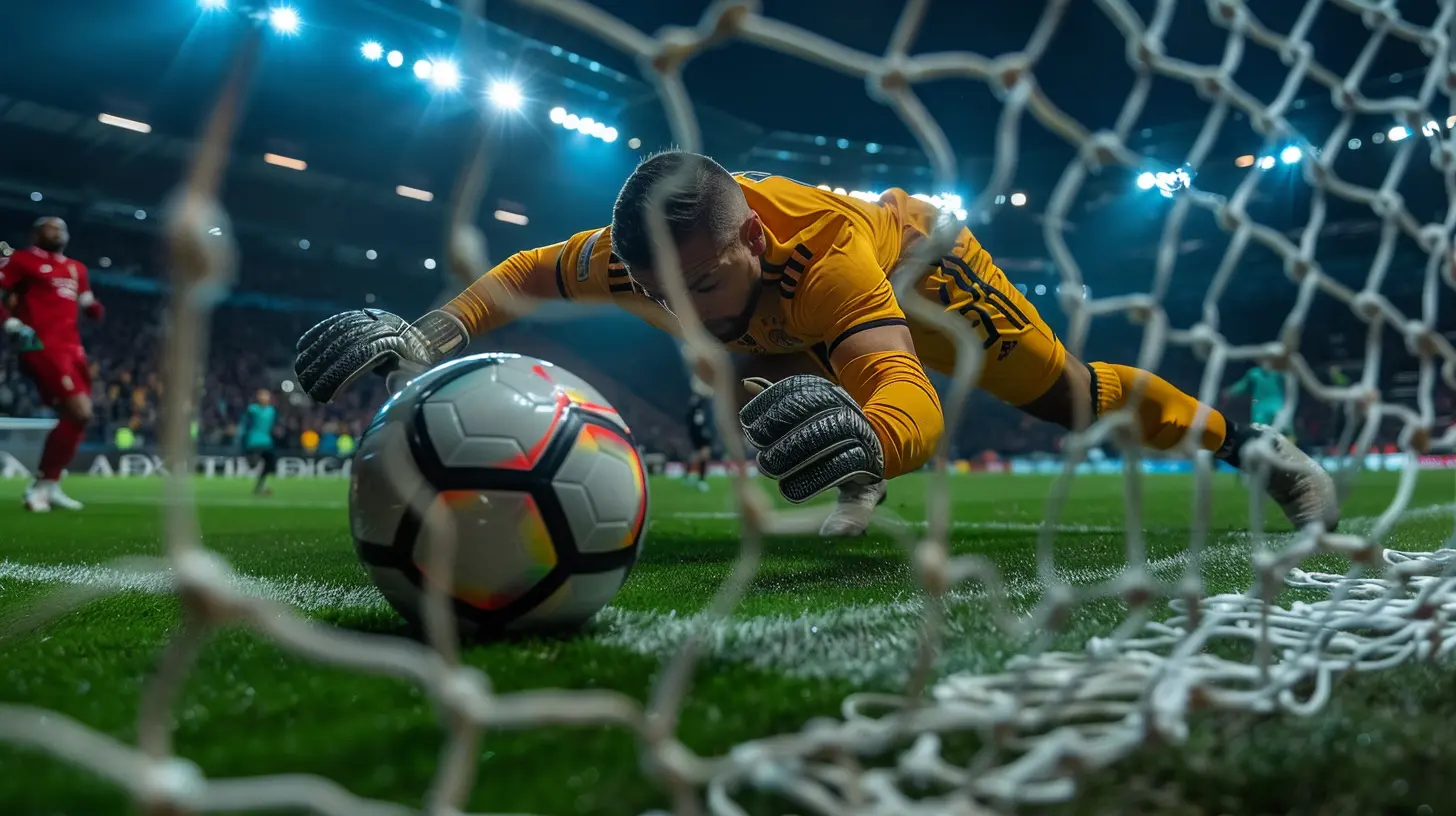Why Team A’s High-Line Defense Worked Against the Odds
26 May 2025
When it comes to football tactics, few strategies are as bold and risky as playing a high-line defense. It's a gamble—one that can leave a team exposed if not executed perfectly. Yet, Team A defied expectations by employing this approach successfully, even against fast, counter-attacking opponents.
So, what made their high-line defense so effective? Why did it work when logic suggested it should have failed? Let's break it down.

Understanding the High-Line Defense
A high-line defense is when a team pushes its defensive line further up the pitch, near or past the halfway line. The goal? Compress space, suffocate opposition attacks early, and dominate possession. The danger? A single ball over the top can leave an entire backline scrambling.For many teams, this is a high-risk, high-reward strategy. If executed poorly, it can lead to disaster. But when done right, it becomes a masterstroke of defensive brilliance.

Why Team A’s High-Line Worked
1. Perfect Coordination and Communication
A high-line defense demands flawless synchronization. One mistake—one defender stepping up too late or too early—can break the entire shape of the backline.Team A’s defensive unit operated almost telepathically. Their center-backs and full-backs moved in unison, ensuring no gaps were left open. This level of understanding doesn't happen overnight—it’s a result of rigorous training and a deep understanding of each other’s movements.
2. Relentless Pressing from the Front
High-line defending only works if the entire team buys in. That starts with the forwards and midfielders applying consistent high pressure on the opposition.Team A’s attackers never left opposing defenders alone. Constant harassment forced rushed passes and mistakes, making it harder for opponents to exploit the space behind the high line. Instead of waiting for the defense to handle threats, the whole team contributed to winning possession early.
3. Pace and Recovery Ability
Let's be real—a high-line defense is only good if the defenders can actually keep up with fast attackers. If your center-backs are slow, it's a recipe for disaster.Luckily, Team A’s backline was quick and agile. Even when long balls were played over the top, their defenders had the speed and intelligence to track back quickly and recover possession.
Think of it like a game of cat and mouse. The attackers might think they have space, but before they can take advantage, a fast center-back is already breathing down their necks.
4. Sweeper Keeper as the Last Line of Defense
A high-line defense needs a sweeper-keeper—someone who acts as an extra defender and clears dangers before they become chances.Team A’s goalkeeper was exceptional in this role. Quick off the line, sharp in reading through balls, and comfortable playing with his feet, he essentially acted as an extra outfield player. This gave the team an extra layer of security, reducing the risk of getting caught out.
5. Offside Trap Mastery
One of the smartest weapons of a high-line defense? The offside trap. If executed properly, it can neutralize quick opponents by catching them out before they even get a chance to attack.Team A’s defenders had their timing down to perfection. By stepping up at the right moment, they repeatedly forced opposing strikers into offside positions. This didn’t just frustrate attackers—it disrupted the opposition's rhythm and made them hesitant to attempt runs in behind.
6. Tactical Awareness and Adaptability
Playing a high-line isn’t about blindly sticking to one idea. It requires constant adjustments based on the game situation.Team A knew when to step up aggressively and when to drop slightly deeper. If their opponents started relying on lofted through balls, they repositioned their defensive line accordingly. Adaptability was key in making the strategy work.
7. Midfield Cover and Support
A high-line defense can't function in isolation—it needs support from the midfield. Team A’s midfielders provided an extra defensive shield, cutting off passing lanes and preventing the opposition from playing easy balls into dangerous areas.By blocking passing routes and closing down spaces quickly, they ensured that even if the opposition wanted to exploit the high line, they rarely had the time and space to execute their game plan.

The Risks and How Team A Mitigated Them
1. Vulnerable to Long Balls? Not Quite
Most teams fear the high line because of long balls over the top. But Team A’s proactive defending, quick reaction speed, and reliable sweeper-keeper minimized this risk.Rather than standing and waiting for long balls, they anticipated them early, cutting out passes before they became dangerous.
2. Exposed on the Counter? Only If You Let It Happen
Counter-attacks are the Achilles' heel of a high-line defense. But Team A had a plan—smart tactical fouls and relentless pressing.They committed small, tactical fouls when necessary to stop transitions, ensuring that the opposition couldn’t launch full-speed counters. It wasn’t about dirty play—it was about being strategically disruptive.
3. Opponent’s Speedy Attackers? Meet Tactical Discipline
Even against pacey opponents, Team A’s defenders didn’t panic. They relied on positioning, anticipation, and not rushing into tackles. By staying composed and forcing attackers wide instead of letting them go through the center, they neutralized the danger.4. Mental Toughness Under Pressure
Let's face it—playing a high line is mentally exhausting. One lapse in concentration, and you’re conceding a goal.But Team A’s defensive unit stayed sharp for the full 90 minutes. They were disciplined, focused, and never let their concentration dip. That kind of consistency is what separates good teams from great ones.

Final Thoughts
Team A’s high-line defense wasn’t just a wild risk—it was a calculated, well-executed strategy that worked against the odds.Through sharp coordination, relentless pressing, rapid recovery, and tactical intelligence, they turned a traditionally risky system into a weapon. While high-line defending isn't for every team, when done right, it can suffocate opponents and dominate games.
Would other teams dare to replicate their success? That remains to be seen. But one thing’s for sure—Team A’s bold defensive approach has set a new standard for how high-risk football can lead to high rewards.
all images in this post were generated using AI tools
Category:
Post Match AnalysisAuthor:

Frankie Bailey
Discussion
rate this article
3 comments
Kenzie Monroe
Team A's high-line defense was a bold strategy that paid off. Their disciplined positioning and quick counter-pressing stifled opponents, proving that calculated risk can lead to success!
June 18, 2025 at 12:47 PM

Frankie Bailey
Thank you! I'm glad you appreciated the analysis. Team A's strategy indeed showcased the effectiveness of discipline and calculated risks in modern football.
Zyana Martinez
Team A's high-line defense danced on the edge of chaos, defying conventional wisdom under relentless pressure. What unseen strategy propelled them to success? Was it pure instinct or a calculated gamble? In a game where margins are razor-thin, sometimes the biggest risks yield the greatest rewards.
June 3, 2025 at 4:59 AM

Frankie Bailey
Team A's success stemmed from a blend of calculated risk-taking and acute situational awareness, allowing them to exploit opponents' weaknesses while maintaining defensive cohesion. Their high line was a tactical gamble that paid off by creating pressure and forcing turnovers in key areas.
Damon Morris
Who knew Team A’s high-line defense was the ultimate game of red-light-green-light? They turned the pitch into a speedy playground, outsmarting opponents like it was a friendly game of tag! Props to them for running circles around the competition!
May 29, 2025 at 10:49 AM

Frankie Bailey
Thank you! Their high-line strategy certainly showcased both skill and adaptability, proving that intelligent tactics can create a dynamic and effective defense.



